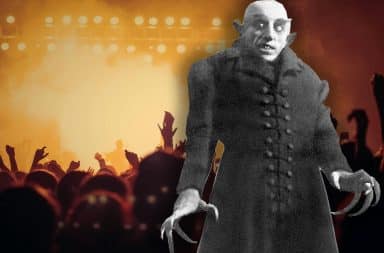Interviewer: Thank you for your time. I understand you’re quite busy at the moment with the back-to-school madness.
Designer: Yes, I’m in the midst of a rather demanding redesign of the school sports shirt. Trying to source the itchiest polyester possible—my usual supplier went bankrupt.
I: That’s terrible.
D: Yes. I might have to go with acrylic, which isn’t nearly as irritating on the skin.
I: I thought acrylic fabrics were toxic. Wouldn’t that pose a health risk to the wearer?
D: I can only hope so.
I: Over the course of your career, you’ve designed for countless schools across the country. Is there one special uniform that stands out for you?
D: That’s like asking me to choose a favourite child!
I: But surely there’s one that you’re particularly proud of?
D: Well in the industry they still talk about the palette of my 2007 Autumn/Winter collection. Drab brown and caution-tape yellow. Such a foul combination that no one had ever thought to use it before!
I: And what was the inspiration behind that colour palette?
D: A particularly gruesome crime scene I saw in an episode of CSI: Miami.
I: You’re also responsible for designing the notorious “overlarge” school backpack.
D: Oh, the monstrous one that completely engulfs the wearer? With the thick straps that you can never adjust properly? Genius—though I say it myself. There is no purer joy, I think, than watching a student stumbling into school looking like they’re being devoured by something out of Pan’s Labyrinth.
I: Where do you begin with an iconic design like that? What’s your starting point?
D: I start with a clear goal in mind, always. I’m a very pragmatic designer in that way. My aim with the backpack was to inflict as much harm as possible on the student’s self-esteem. Irreparable emotional damage. That’s the goal.
I: So, is it fair to say that there’s a great deal of psychological power that comes with being a uniform designer?
D: Oh absolutely. And it is our responsibility, as uniform designers, to make sure that we’re abusing that power as much as possible.
I: Tell me about your design influences.
D: Toe socks, bus seats, ‘Cats' the movie, dust storms, the collected works of Nicholas Sparks, meatloaf—the dinner, Meat Loaf—the singer, every doctor’s waiting room I have ever visited, Velcro, the scent of burning rubber and Miss Trunchbull.
I: Fascinating. You create uniforms for both male and female school students. Do you keep the nuances of gender in mind when you’re designing?
D: No. It really is a one size fits all approach. My elderly mother is the size model for all my designs and each uniform is fitted to her dimensions regardless of the intended gender or age.
I: And what is it that makes your mother such an excellent size model?
D: Her exquisite hunchback.
I: Just one final question. There are a growing number of people who think that school uniforms are anti-individualist and obsolete. How would you respond to these criticisms?
D: I would say that sacrificing a child’s individualism is a small price to pay for a deeply bonded school community. Because let me tell you, there is nothing that brings students together like the lasting trauma of a three-piece tartan ensemble and a compulsory plaid bucket hat.


